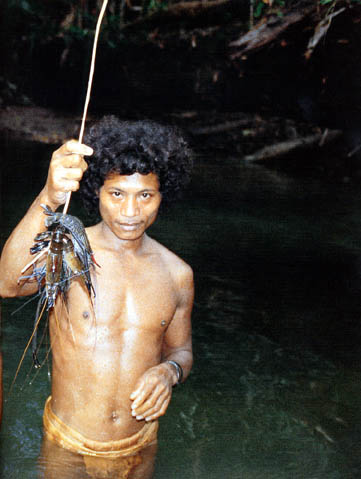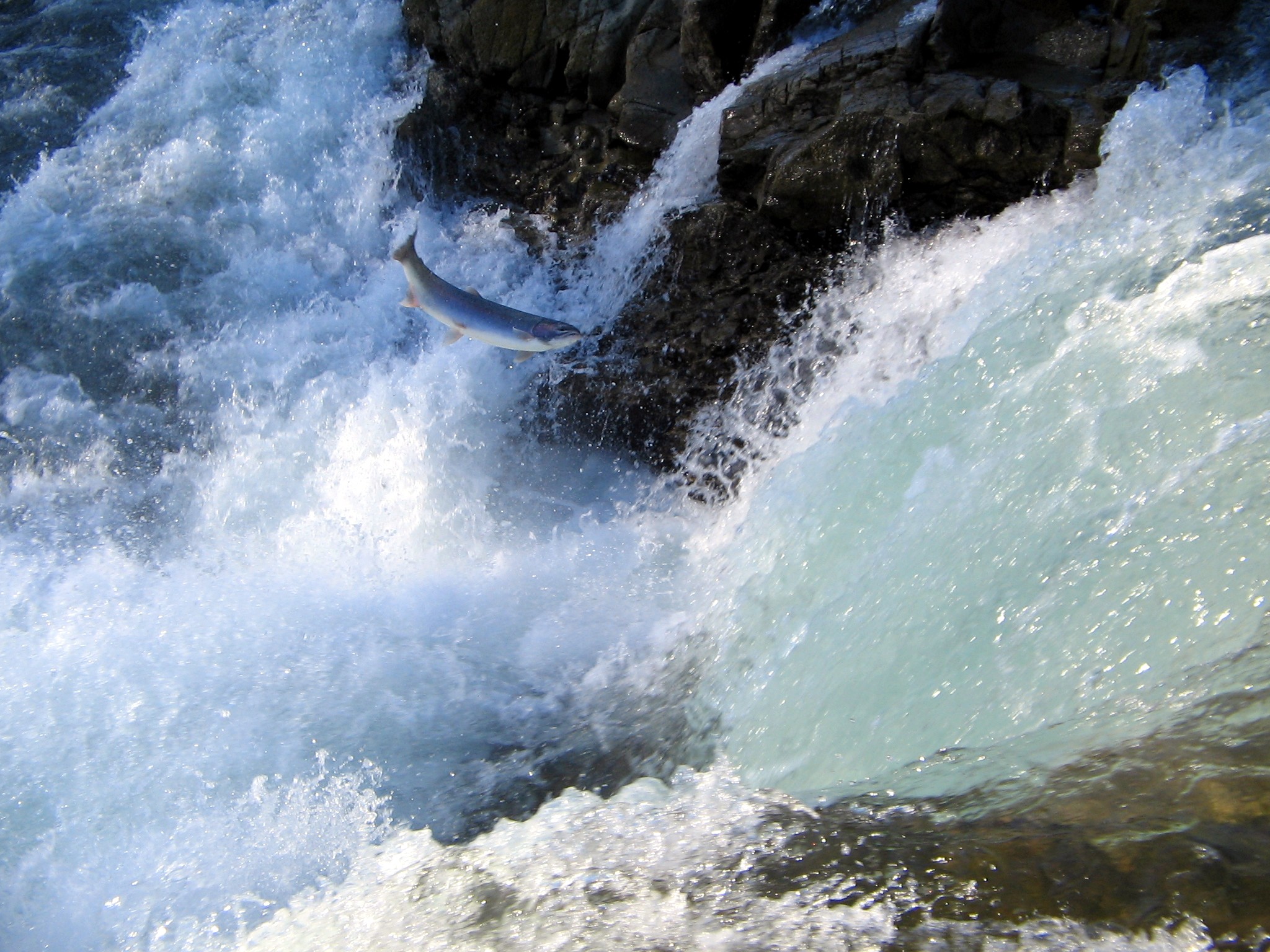|
Stiphodon Annieae
''Stiphodon annieae'' is a freshwater goby only occurring in Halmahera, Indonesia. Like other Sicydiinae, ''Stiphodon annieae'' is found in clear, high gradient streams with rocky bottoms. It lives on the bottom of the river, on top of rocks. It is assumed to be amphidromous Fish migration is mass relocation by fish from one area or body of water to another. Many types of fish migrate on a regular basis, on time scales ranging from daily to annually or longer, and over distances ranging from a few metres to thousa .... The males of this species can reach a length of . fishbase References annieae Taxa named by Philippe Keith[...More Info...] [...Related Items...] OR: [Wikipedia] [Google] [Baidu] |
Philippe Keith
{{Short pages monitor ... [...More Info...] [...Related Items...] OR: [Wikipedia] [Google] [Baidu] |
Goby
The Gobioidei are a suborder of percomorph fish. Many of these fishes are called gobies. It is by far the largest and most diverse order within the order Gobiiformes, and one of the most diverse groups of ray-finned fish in general. The suborder, which was previously considered a suborder of Perciformes, is made up of about 2,211 species that are divided between seven families. Phylogenetic relationships of the Gobioidei have been elucidated using molecular data. Gobies are primarily small species, often with large heads and tapered bodies, that live in marine water, but roughly 10% of these species inhabit fresh water. This order is composed chiefly of benthic or burrowing species; like many other benthic fishes, most gobioids do not have a gas bladder or any other means of controlling their buoyancy in water, so they must spend most of their time on or near the bottom. Traditionally most of the species called gobies have been classified in the order Perciformes as the subord ... [...More Info...] [...Related Items...] OR: [Wikipedia] [Google] [Baidu] |
Halmahera
Halmahera, formerly known as Jilolo, Gilolo, or Jailolo, is the largest island in the Maluku Islands. It is part of the North Maluku Provinces of Indonesia, province of Indonesia, and Sofifi, the capital of the province, is located on the west coast of the island. Halmahera has a land area of . It is the largest island of Indonesia outside the five main islands. It had a population of 162,728 in 1995; by 2010, it had increased to 449,938 for the island itself (excluding the tip which is considered part of the Joronga Islands, but including Gebe and Ju islands) and 667,161 for the island group (including all of South Halmahera and Tidore, but not Ternate). Approximately half of the island's inhabitants are Islam in Indonesia, Muslim and half are Christianity in Indonesia, Christian. History Sparsely-populated Halmahera's fortunes have long been closely tied to those of the smaller islands of Ternate and Tidore, both off its west coast. This island was the site of Sultanate of Jai ... [...More Info...] [...Related Items...] OR: [Wikipedia] [Google] [Baidu] |
Indonesia
Indonesia, officially the Republic of Indonesia, is a country in Southeast Asia and Oceania, between the Indian Ocean, Indian and Pacific Ocean, Pacific oceans. Comprising over List of islands of Indonesia, 17,000 islands, including Sumatra, Java, Sulawesi, and parts of Borneo and New Guinea, Indonesia is the world's largest archipelagic state and the List of countries and dependencies by area, 14th-largest country by area, at . With over 280 million people, Indonesia is the world's List of countries and dependencies by population, fourth-most-populous country and the most populous Islam by country, Muslim-majority country. Java, the world's List of islands by population, most populous island, is home to more than half of the country's population. Indonesia operates as a Presidential system, presidential republic with an elected People's Consultative Assembly, legislature and consists of Provinces of Indonesia, 38 provinces, nine of which have Autonomous administrative divisi ... [...More Info...] [...Related Items...] OR: [Wikipedia] [Google] [Baidu] |
Sicydiinae
The Sicydiinae are a small subfamily (about 118 species) of freshwater gobies, with only nine genera. They are usually found in fast-moving mountain streams in tropical islands. They are characterized by highly developed rounded suction discs and an amphidromous lifecycle. Adult lengths range from . Some species are popular in the aquarium trade. The genera included under Sicydiinae are: :*''Akihito Akihito (born 23 December 1933) is a member of the Imperial House of Japan who reigned as the 125th emperor of Japan from 1989 until 2019 Japanese imperial transition, his abdication in 2019. The era of his rule was named the Heisei era, Hei ...'' Watson, Keith, and Marquet, 2007 :*'' Cotylopus'' Guichenot, 1863 :*'' Lentipes'' Günther, 1861 :*'' Parasicydium'' Risch, 1980 :*'' Sicyopterus'' Gill, 1860 :*'' Sicyopus'' Gill, 1863 :*'' Stiphodon'' Weber, 1895 :*'' Sicydium'' Cuvier & Valenciennes, 1837 References External links * Oxudercidae Taxa named by Theodo ... [...More Info...] [...Related Items...] OR: [Wikipedia] [Google] [Baidu] |
Amphidromous
Fish migration is mass relocation by fish from one area or body of water to another. Many types of fish migrate on a regular basis, on time scales ranging from daily to annually or longer, and over distances ranging from a few metres to thousands of kilometres. Such migrations are usually done for better feeding or to reproduce, but in other cases the reasons are unclear. Fish migrations involve movements of schools of fish on a scale and duration larger than those arising during normal daily activities. Some particular types of migration are ''anadromous'', in which adult fish live in the sea and migrate into fresh water to spawn; and ''catadromous'', in which adult fish live in fresh water and migrate into salt water to spawn. Marine forage fish often make large migrations between their spawning, feeding and nursery grounds. Their movements are associated with ocean currents and with the availability of food in different areas at different times of the year. The migratory ... [...More Info...] [...Related Items...] OR: [Wikipedia] [Google] [Baidu] |
Stiphodon
''Stiphodon'' is a genus of freshwater gobies. They inhabit swift, clear streams close to the sea and are found in large parts of Asia and Oceania. Many of the 36 currently recognized species have extremely restricted distributions on single islands or even single streams. These are small gobies with bodies squarish in cross section. A female of '' Stiphodon multisquamus'' with a standard length of 60.4 mm is the largest ''Stiphodon'' individual on record. Males of ''Stiphodon'' species are often vividly colored and a few species are occasionally sold in the aquarium trade, including '' Stiphodon ornatus'', '' Stiphodon atropurpureus'', '' Stiphodon maculidorsalis'', '' Stiphodon semoni'', and '' Stiphodon surrufus''. Species There are currently 37 recognized species in this genus: * '' Stiphodon alcedo'' Maeda, Mukai & Tachihara, 2012 – Described from Okinawa and Iriomote in the Ryukyu Islands, Japan, but these may be vagrant populations transported to Japan via the Kuros ... [...More Info...] [...Related Items...] OR: [Wikipedia] [Google] [Baidu] |
Taxa Named By Philippe Keith
In biology, a taxon (back-formation from ''taxonomy''; : taxa) is a group of one or more populations of an organism or organisms seen by taxonomists to form a unit. Although neither is required, a taxon is usually known by a particular name and given a particular ranking, especially if and when it is accepted or becomes established. It is very common, however, for taxonomists to remain at odds over what belongs to a taxon and the criteria used for inclusion, especially in the context of rank-based (" Linnaean") nomenclature (much less so under phylogenetic nomenclature). If a taxon is given a formal scientific name, its use is then governed by one of the nomenclature codes specifying which scientific name is correct for a particular grouping. Initial attempts at classifying and ordering organisms (plants and animals) were presumably set forth in prehistoric times by hunter-gatherers, as suggested by the fairly sophisticated folk taxonomies. Much later, Aristotle, and later still ... [...More Info...] [...Related Items...] OR: [Wikipedia] [Google] [Baidu] |


